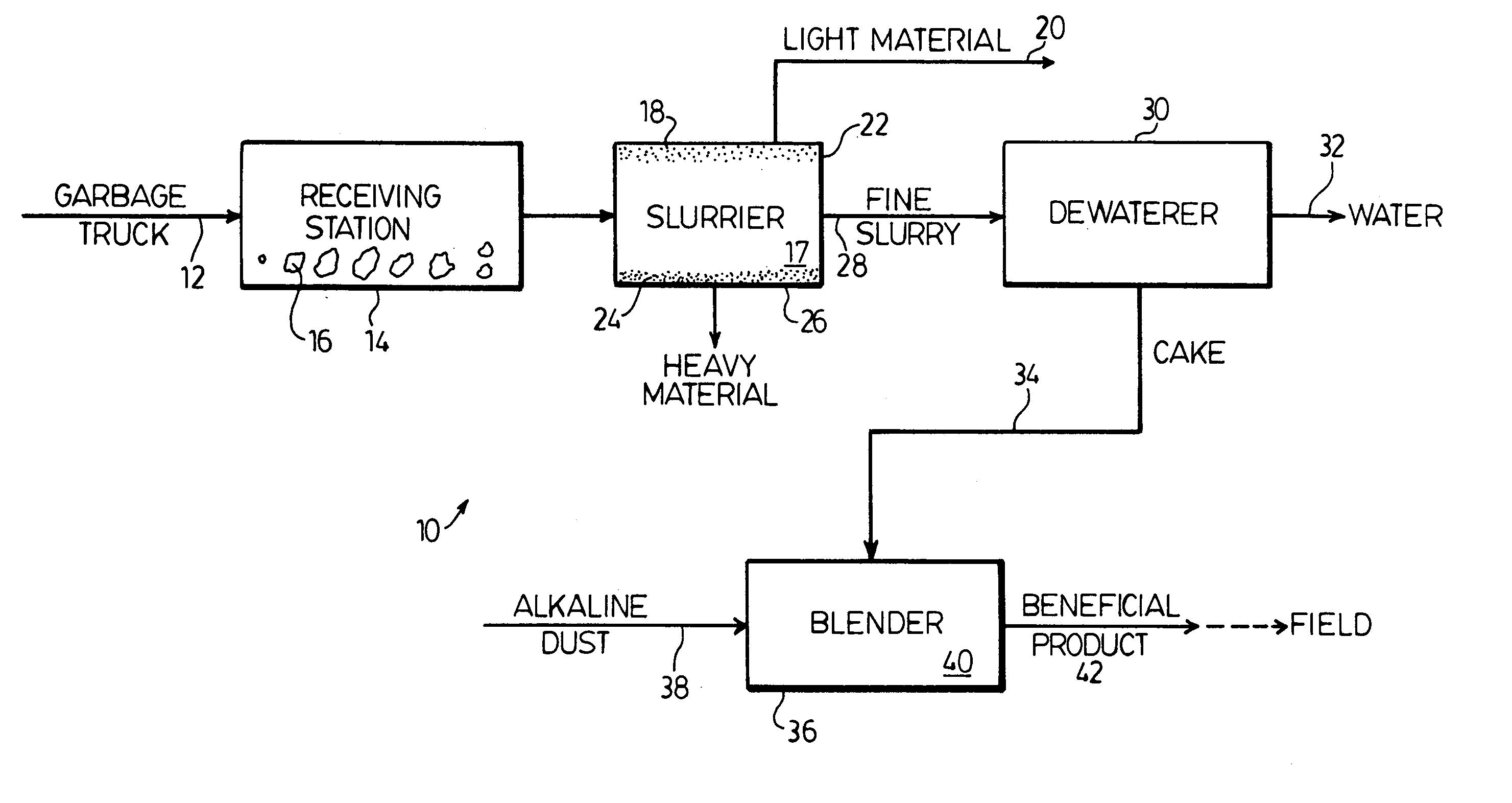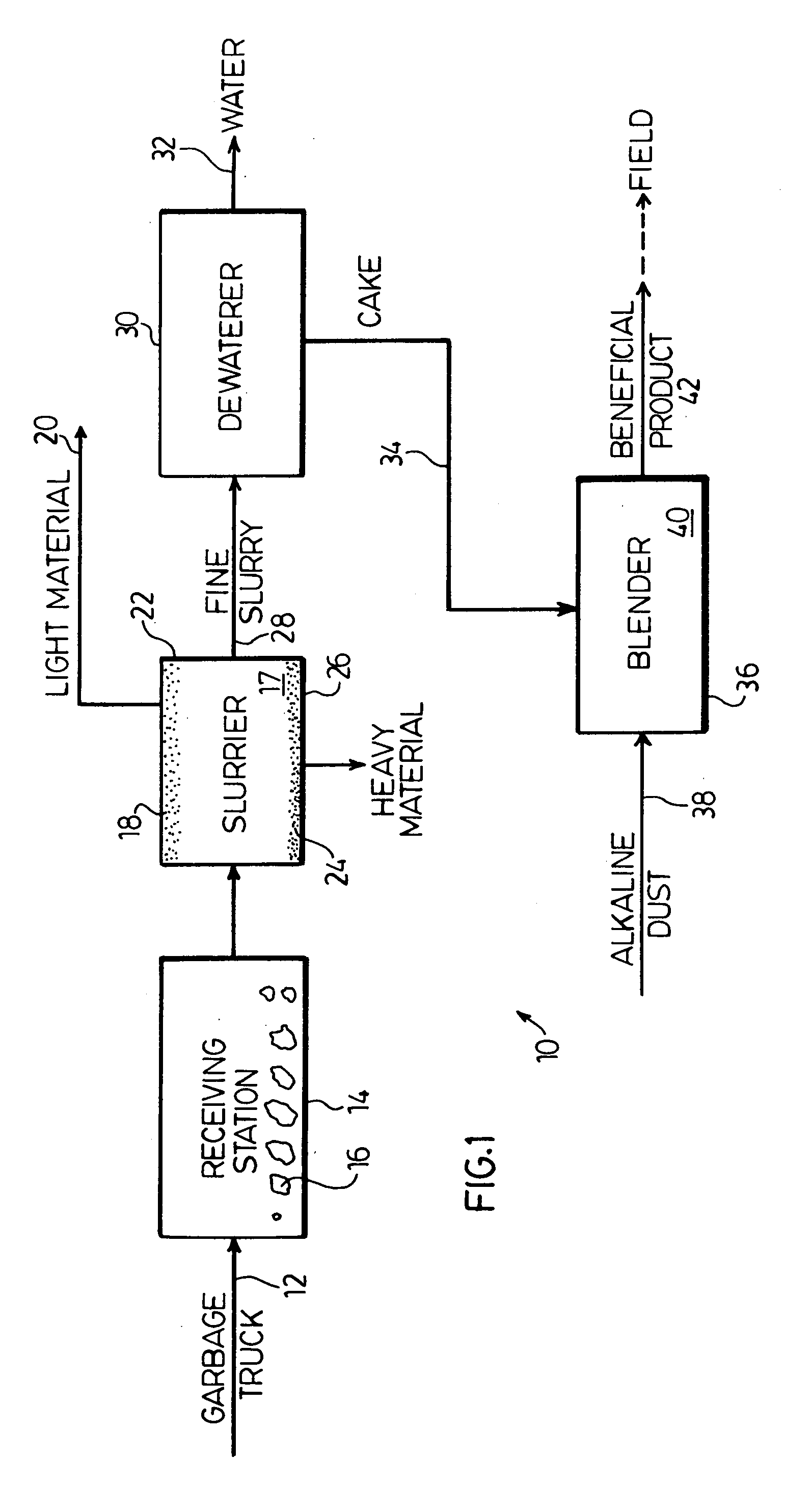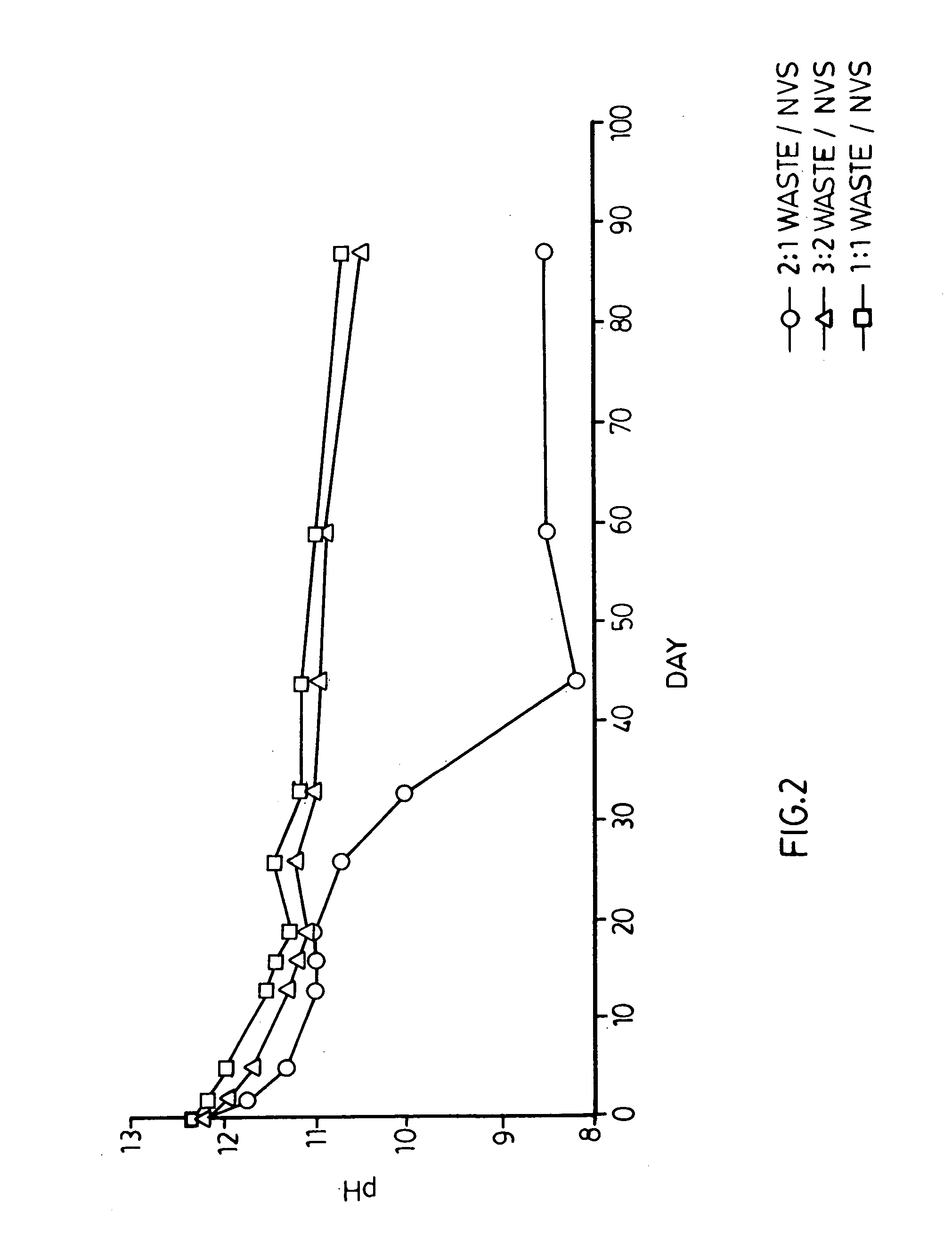Beneficial source separated organics products
a technology of organic products and sources, applied in the direction of organic fertilisers, climate change adaptation, etc., can solve the problems of preventing microbial composting activity, reducing the workability of soil, and reducing the undesirable characteristics of each starting material. , the effect of improving the water carrying capacity of the soil
- Summary
- Abstract
- Description
- Claims
- Application Information
AI Technical Summary
Benefits of technology
Problems solved by technology
Method used
Image
Examples
examples
[0036] In these embodiments, de-watered kitchen waste (39% solids) was treated by two processes in an effort to stabilize the nutrients and produce acceptable re-use products. The first process treated the kitchen waste sample in a standard N-Viro Soil Process (herein NVS) and compared to a standard alkaline-stabilization treatment. The second process-used NVS as an ingredient to stabilize and facilitate a co-composting reaction.
[0037] The sample under test appeared fibrous with occasional small pieces of plastic. The initial physical characteristics of the sample are presented in Table 1.
Process 1 N-Viro Soil Process and Alkaline Stabilization
[0038] Initial studies focused on the physical, chemical, and odor characteristics of the dewatered kitchen wastes treated with an alkaline admixture using laboratory-based alkaline stabilization and the N-Viro Soil processes. An alkaline admixture (cement kiln dust) was added at different amounts to two separate portions of the sample to ...
PUM
 Login to View More
Login to View More Abstract
Description
Claims
Application Information
 Login to View More
Login to View More - R&D
- Intellectual Property
- Life Sciences
- Materials
- Tech Scout
- Unparalleled Data Quality
- Higher Quality Content
- 60% Fewer Hallucinations
Browse by: Latest US Patents, China's latest patents, Technical Efficacy Thesaurus, Application Domain, Technology Topic, Popular Technical Reports.
© 2025 PatSnap. All rights reserved.Legal|Privacy policy|Modern Slavery Act Transparency Statement|Sitemap|About US| Contact US: help@patsnap.com



